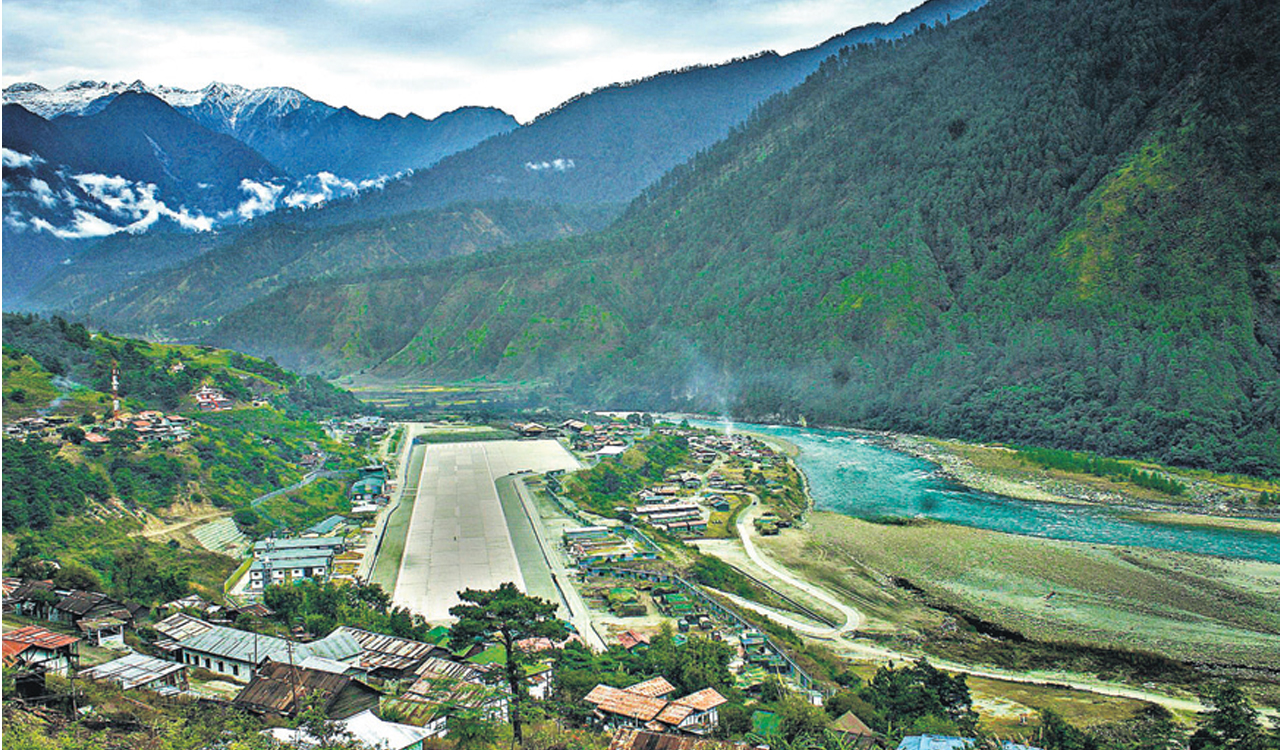The Vibrant Villages Programme fosters a sense of national pride and belonging among residents of border areas
Published Date – 11 April 2024, 11:57 PM

By Neeraj Singh Manhas, Aishwarya Singh Raikwar
India’s north-eastern frontier, a mosaic of rugged terrain and vibrant cultures, stands on the front lines of the nation’s geopolitical and strategic calculus, especially in the shadow of its complex relationship with China. The Vibrant Villages Programme (VVP) of the government of India was approved by the union Cabinet on February 15, 2023, for 2022-23 to 2025-26 with a financial allocation of Rs 4,800 crore. The Ministry of Home Affairs is the nodal agency for its planning and implementation.
This pilot programme, aimed to encourage inclusive development and tourism along the northern borders, was launched on April 10, 2023, from the Kibithoo village of Anjaw district, Arunachal Pradesh. The programme is a Centrally Sponsored Scheme (CSS) for the comprehensive development of the abutting northern villages on the Indo-China border. It serves a dual purpose by acting as a strategic countermeasure to China’s assertive infrastructure expansion along the Line of Actual Control (LAC).
Infrastructure Development
The Himalayan border region, characterised by its harsh climate and challenging topography, has long been a point of contention between India and China. The border disputes culminated in the 1962 war, and tensions have flared periodically, most recently in the Galwan Valley conflict in 2020. China’s rapid infrastructure development near the LAC — including roads, military bases and villages — has not only enhanced its strategic military deployment capabilities but also signalled its intent to assert territorial claims.
In response, India has ramped up its own infrastructure endeavours, constructing roads, bridges and tunnels to ensure year-round connectivity and quick troop mobilisation. This ambitious project covers a specified aerial distance of 0-10 kilometres from the initial place of residence at the International Boundary (IB) in 16 States and two union Territories that adjoin land borders.
All census villages/towns, semi-urban and urban regions, and projects/efforts to address identified deficiencies in critical infrastructure such as roads and bridges, healthcare, education, agriculture, sports, potable water and sanitation, Anganwadis, community centres and small-scale industries have been granted approval in accordance with the Border Area Development Programme. In the first phase, 662 villages of a total 2,963 villages in 19 districts across 46 border blocks of Arunachal Pradesh, Sikkim, Uttarakhand, Himachal Pradesh and Ladakh will be developed.
Strategic Significance
The primary objective is to make these villages “truly vibrant” by reversing the migration and enhancing the quality of life there. The VVP is highly significant due to the bordering villages’ strategic significance. This is clearly demonstrated by the government’s recent decision to rename villages that were previously referred to as the “last village” as the “first village of India.” From a national security standpoint, our adjacent villages constitute the first line of defence, and these remote regions required transformation which was long due, but the implications of the VVP extend far beyond economic development.
In the context of China’s threat, the programme serves as a soft power tool, fostering a sense of national pride and belonging among the residents of these border areas. The development of infrastructure not only facilitates the easier movement of Indian defence forces but also sends a clear message of India’s commitment to defend its territorial integrity.
Counteracting China
The progress in Arunachal Pradesh has facilitated greater economic and cultural engagement with Tibet, although this has also brought about increased scrutiny from China due to the delicate nature of the India-China border situation. China’s strategy along its borders has often involved the creation of facts on the ground, including the construction of infrastructure within disputed territories. By developing its border areas, India is not only countering China’s territorial ambitions but also asserting its effective administration and control over these regions and some other districts of India.
Similarly, in Himachal Pradesh, particularly within the Kinnaur and Lahaul & Spiti districts, they are also enhancing the local infrastructure which has boosted tourism and cultural ties with Tibet which can be identified as “zones of soft diplomacy”, highlighted by a India News Network report. In Sikkim, the engagement with Nepal and Bhutan is also on improving infrastructure, such as better roads and border amenities, which aims to streamline trade and enable a more vibrant exchange of a variety of goods, including farm produce and cultural items.
In the case of Uttarakhand’s initiatives in Chamoli, Uttarkashi and Rudraprayag districts, they are also positively influencing cross-border relations with Nepal and Tibet. The VVP, therefore, plays a critical role in India’s broader strategy to maintain and secure its borders against encroachment and influence operations by adversarial powers.
Moreover, the programme aims to showcase India’s model of inclusive growth and sustainable development as an alternative to China’s more coercive tactics. By building resilient communities that are economically viable and strategically significant, India is creating a living testament to its democratic values and governance model, which respects the rights and aspirations of its border populations.
Peace and Stability
While the VVP is strategic in nature, it also embodies India’s vision for peace and stability in the region. The programme’s effective execution will result in the villages experiencing economic growth, self-sufficiency, the creation of sustainable livelihood prospects, the reversal of migration and the establishment of a paradigm for rural sustainability. It is an essential move towards establishing sustainable rural communities, the provision of essential services and amenities to all, and the promotion of socially and environmentally responsible tourism throughout the region.
By prioritising the empowerment of rural communities, fostering entrepreneurialism and skill development, and providing support for sustainable development, this initiative possesses the capacity to enhance the economic prospects and quality of life of the rural populace within the targeted region.

(Neeraj Singh Manhas is Special Advisor, South Asia, at Parley Policy Initiative, Republic of Korea. Aishwarya Singh Raikwar is an Assistant Manager at Vibrant Villages Programme Cell, Ministry of Tourism, Government of India. Views are personal)




